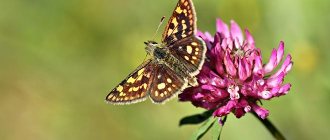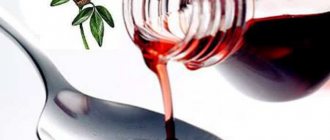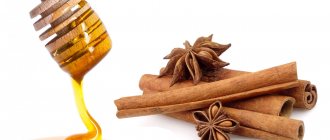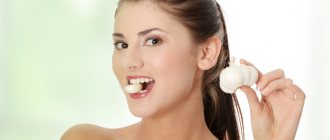How does the plant affect cholesterol?
The experience of traditional medicine shows that linden helps to reduce the level of total cholesterol in the blood and normalize the ratio of its individual fractions. However, no major studies have been conducted regarding the effects of the flowers specifically.
The positive effect may be associated with the following components of the composition:
- Flavonoids (quercetin, kaemferol, hesperidin). It has been proven that these substances help improve the lipid profile by increasing the level of high-density lipoproteins (“good” cholesterol) and reducing atherogenic lipids (“bad” cholesterol), mainly triacylglycerides. A significant increase in HDL leads to the fact that excess cholesterol begins to be intensively removed from macrophage cells in the walls of the arteries, and this contributes to the reverse development of atherosclerotic plaques in the initial stages. Separate studies note that plant flavonoids, when taken regularly, can increase “useful” lipids by 0.1-0.3 mmol/l, while every 0.0259 mmol/l reduces the risk of developing any cardiovascular diseases by 3%.
- Sponins. They activate the resistance of the inner lining of the arteries, preventing the deposition of glucose and cholesterol crystals and subsequent platelet aggregation, which can lead to increased blood viscosity and suppression of the utilization of “harmful” cholesterol.
- Phytosterols. They block the reuptake of cholesterol, which is excreted into the lumen of the gastrointestinal tract.
Expert commentary
Kardash Anton Borisovich
Therapist, cardiologist. Doctor of the highest category.
Although targeted studies have not been conducted, there is reason to believe that linden inflorescences, due to their composition, can not only reduce total cholesterol, but also increase the level of beneficial lipoproteins, thereby providing reliable prevention of atherosclerosis and all associated complications: from coronary heart disease to stroke or myocardial infarction.
Reviews from doctors
The most authoritative opinions regarding the use of linden flowers as a means to combat hypercholesterolemia are the opinions of doctors. They say the following:
Andrey Sergeevich, family doctor: The inclusion of linden flowers in therapy for hypercholesterolemia is justified by the rich composition of linden blossom. Herbal medicine is a good complement to drug treatment. In patients undergoing just such a complex treatment, cholesterol levels decrease more rapidly than when simply taking pills.
Vladimir Mikhailovich, cardiologist: Overweight people are often susceptible to cardiovascular diseases. In this case, treatment cannot be done without diet. To compensate for the nutrients lost during dieting, linden tea is prescribed. In addition to replenishing the balance of vitamins and microelements, linden flowers have a positive effect on the condition of the walls of blood vessels.
The use of linden flowers to reduce the level of “bad” cholesterol should be carried out under the supervision of a doctor as part of complex therapy. Self-medication can be dangerous.
Other medicinal properties
In addition to the substances already described, linden also contains:
- carotene;
- vegetable essential oils;
- ascorbic acid;
- talicin;
- tanning components;
- antioxidants.
These useful elements ensure the implementation of the following medicinal properties:
- Diuretic action. Talicin, which is part of the plant’s flowers, helps remove excess fluid from the body. This feature is relevant in the presence of edema associated with chronic heart failure. And due to a decrease in the volume of circulating blood, blood pressure drops.
- Decreased cardiac output and cardiac preload. Linden is good for the heart through several mechanisms. A moderate antispasmodic effect on smooth myocytes of the vascular wall, as well as an increase in the resistance of the inner wall of blood vessels to aggressive blood factors contribute to the improvement of systemic hemodynamics and microcirculation. As a result, there is no stagnation in the venous bed.
In addition, linden has the following properties:
- anti-inflammatory effect (reduced production of mediators);
- antispasmodic effect (helps reduce pain caused by spasm of smooth muscles);
- decrease in body temperature (does not fall below standard values);
- dilution and improvement of sputum discharge;
- increasing immunity;
- choleretic effect (accelerates the evacuation of bile by increasing the motility of the gallbladder and relaxing the sphincter of Oddi);
- increased sweating.
Composition of linden flowers
The plant contains the following components:
- Beta carotene;
- Essential oils;
- Flavonoids components that prevent the fragility of arterial membranes and increase their elasticity;
- Vitamin C;
- Component talicin, which provides a diuretic effect and increased sweating in the body;
- Tanning components;
- Natural antioxidants that help dissolve atherosclerotic deposits in the bloodstream and lower the cholesterol index;
- Ascorbic acid and B vitamins.
Indications for use
It is recommended to use the medicinal plant for the following pathologies:
- Lipid profile disorders.
- Atherosclerosis.
- Hypertension and symptomatic arterial hypertension.
- Congestive heart failure.
- Fever.
- Intoxication syndrome against the background of any infection.
- Joint diseases. The effect has not been fully studied; positive dynamics are observed in arthritis of any etiology and osteoarthritis.
- Pathologies of the glycemic profile (diabetes mellitus, impaired glucose tolerance, fasting glycemia).
- Varicose veins of the lower extremities, chronic venous insufficiency.
- Spastic pain syndrome (pancreatitis, hepatitis, nephritis, etc.).
- Diseases of the gallbladder and other parts of the biliary tract with dysfunction of the hypomotor type.
- Acute respiratory infections.
The effectiveness of linden flowers in the fight against cholesterol
Composition and benefits for the body
The therapeutic effect on the body of biologically active substances makes the plant product an indispensable aid for many diseases, including the fight against excess cholesterol, which is one of the causes of aneurysm and coronary heart disease, hypertension, and obesity. Linden blossom contains:
- essential oil - 0.05%, in particular farnesol, which gives the raw material a characteristic odor;
- polysaccharides - 7-10%, including glucose and galacturonic acid;
- saponins;
- flavonoids hesperidin, quercetin, kaempferol - 5%;
- ascorbic acid;
- carotene;
- vegetable protein,
- fatty oils - 60%.
Return to contents
How does it affect cholesterol?
It is recommended to take linden flowers for cholesterol in the form of teas, infusions, and decoctions due to the chemicals in the composition that have a beneficial effect on blood vessels. Flavonoids are active compounds with the effect of rutin (vitamin P). They reduce weakness and increase the elasticity of vascular walls, phytosterols prevent the formation of plaques. Saponins cause reversal of atherosclerosis in the early stages of development. Considering these properties, medicinal products based on linden flowers are recommended as an adjuvant for the following diseases:
- hypertension;
- cardiac ischemia;
- dyscirculatory encephalopathy (dizziness, loss of consciousness, spots before the eyes);
- aortic aneurysm.
From 1 kg of harvested linden flowers, 300 g of dry raw materials are obtained.
How to use?
For auxiliary treatment, a drink is prepared with linden flowers, which is recommended to be taken instead of classic tea with added sugar or honey. Pour boiling water for 1 hour. l. raw materials, leave for 10-15 minutes, filter and drink. Dried flowers are ground to a powder in a coffee grinder and taken 1 tsp. before meals with a glass of water. In addition to infusion and powder, various herbal infusions are prepared to lower cholesterol. Linden goes well with the following medicinal plants:
- Birch buds;
- oregano, sage, St. John's wort;
- leaves of blackberry, mint, coltsfoot;
- fennel fruit;
- elderberry flowers, chamomile;
- raspberries.
Return to contents
Contraindications
Linden should not be used for conditions such as:
- Age less than 5 years.
- Pregnancy and breastfeeding period.
- Increased individual sensitivity to any components of the plant. Even such severe manifestations of allergies as anaphylactic shock have been noted.
- Dehydration caused by any reason: from nutritional factors to acute intestinal infections.
- Acute renal (CKD) or liver failure.
- Hypotension.
Before starting irradiation, you should definitely study the conditions in which the use of the product is irrational. If you have any doubts, you should consult a specialist!
Lime color from cholesterol
Traditional medicine widely uses linden flowers for cholesterol. Critical blood levels are a very common phenomenon among most of the population. A sedentary lifestyle, poor environment, and poor nutrition are factors that provoke bad cholesterol, which settles in the liver and causes serious problems throughout the body. Using linden blossom will help quickly and effectively eliminate the problem.
How to take it correctly - 4 recipes
There are many ways to prepare the plant. However, the most popular recipes are those that are easy to prepare and eat. The options are presented below.
Tea
Tea is the simplest remedy that is used primarily to reduce circulating cholesterol and remove toxic products from the blood by increasing glomerular filtration and sweating.
To prepare, you need to pour 2 tbsp. l. dried flowers 500 ml of boiling water and let it brew for 20-25 minutes.
You should consume 150-200 ml 2-3 times a day, regardless of meals. The maximum duration of therapy is up to 1 month, then a break of at least 2 weeks is needed.
Decoction
- You need to take 1 tbsp. l. pre-chopped inflorescences and add 200 ml of water.
- The resulting mixture is boiled over low heat for about 10-15 minutes.
- Afterwards the broth is filtered and cooled.
You need to take a continuous course of 100 ml 2 times a day for 14-21 days.
Infusion
- You need to take any glass container with a volume of 3 liters.
- Linden blossom is poured into the container (to the top) and filled with boiled water.
- The future tincture is placed in a cool, dark place for 3 weeks.
- As the water evaporates, it is necessary to replenish the volume of the solution.
After preparation, strain the mixture and take 50 ml 2 times a day. The course of therapy involves 2 weeks of continuous use of the plant extract.
Powder consumption
Dried inflorescences should be crushed in a blender or coffee grinder and consumed 1 tsp. 3 times a day for about 25-30 days. The mixture can be diluted with 1 tbsp. l. flaxseed oil to enhance the lipid-lowering effect.
Linden flowers for cholesterol
Traditional medicine uses linden flowers for cholesterol as an additional remedy in the fight against coronary disease and heart aneurysm, hypertension, obesity, cerebral vascular damage, kidney problems, and acute respiratory viral infections. Infusions, teas, and herbal preparations based on linden blossom are used along with the main drug treatment as prescribed by a doctor, who takes into account the diagnosis, contraindications and side effects.
Review of pharmaceutical drugs
Despite the many beneficial properties, the pharmaceutical industry produces few linden-based products. The following can be distinguished:
- Tincture of flowers. The main components are the inflorescences of this plant. Effective for diseases of the musculoskeletal system and dyslipidemia. It is necessary to use 5-10 drops 3 times a day after meals. Duration of treatment – 2 weeks.
- Linden flowers filter bags. A dietary supplement is crushed plant raw materials, on the basis of which you can prepare tea or decoctions. Indicated to normalize the lipid profile and improve the general condition of respiratory viral infections. To prepare, pour 200 ml of boiling water into 2 filter bags and leave for 15 minutes. Dosage regimen: 1 glass 2-3 times a day.
- Evalar BIO for colds. Despite the fact that the drug is positioned as a medicine for the symptomatic treatment of diseases of the upper respiratory system, it contains chamomile and linden flowers, rose hips, and sea buckthorn. This herbal mixture is highly effective against elevated levels of atherogenic cholesterol in the blood. To prepare a healing solution, you need to fill 1 filter bag with 200 ml of boiling water and use 1 glass 2 times a day. The duration of therapy should not exceed 5-10 days.
Features of the plant
It is not difficult to recognize a linden tree among other trees. During flowering, this is helped by an alluring sweet aroma that spreads hundreds of meters from the source. The tree is not demanding to grow, so it can often be found in forests, plantings and even parks. Planting these trees in public places is not only a way to improve the environment and enrich the flora of cities and towns. Linden, in addition to its intoxicating aroma, has many beneficial properties for the human body.
Linden has active anti-inflammatory properties, which is an indicator for its use in any colds and respiratory diseases, helps restore the elasticity of the vascular system, simultaneously reducing the risk of progression of atherosclerosis, helps remove excess fluid from the body, having a beneficial effect on kidney function. Helps stabilize metabolic processes, thereby counteracting obesity.
Small flowers of the tree, shaped like hearts, emit an aroma that makes you stop and enjoy the unique smell. Scientists have proven that linden aroma is considered one of the powerful antidepressants. Approaching a flowering tree, you can hear the pleasant natural hum that bees emit while collecting medicinal nectar, which turns into healing honey over time, thanks to the hard work of the workers.
Linden inflorescences are a storehouse of vitamins and microelements beneficial to the human body. They include:
- Ascorbic acid, which has a powerful anti-inflammatory, antipyretic and immunity-enhancing effect.
- Vitamin A and farneaol, which help rejuvenate the body.
- Flavonoids that help restore the elasticity and natural firmness of human blood vessels.
- Tannins.
- Carotene, considered in medicine as a natural source of youth and longevity.
- Natural flavors.
The tree is useful for humans not only for its inflorescences; healing components are also found in the bark of the plant, its fruits and leaves. Linden bark is a component of many medicinal infusions and decoctions, thanks to an ingredient called tiliadin, which is found in high concentrations in the bark. The leaves of this plant have no less high medicinal properties: they contain carotene and vitamin C in large quantities, as well as natural protein. The fruits of the tree, which ripen by the end of August, are a source of natural fats that are beneficial for the human body, and nectar is a storehouse of natural sucrose and glucose, an excellent alternative to regular sugar.











